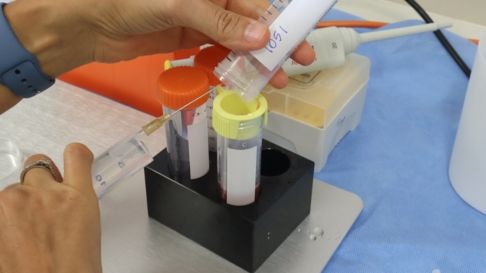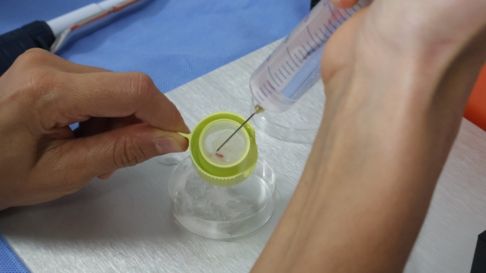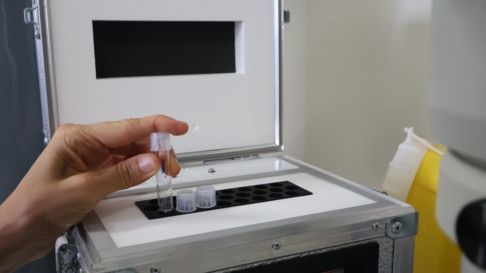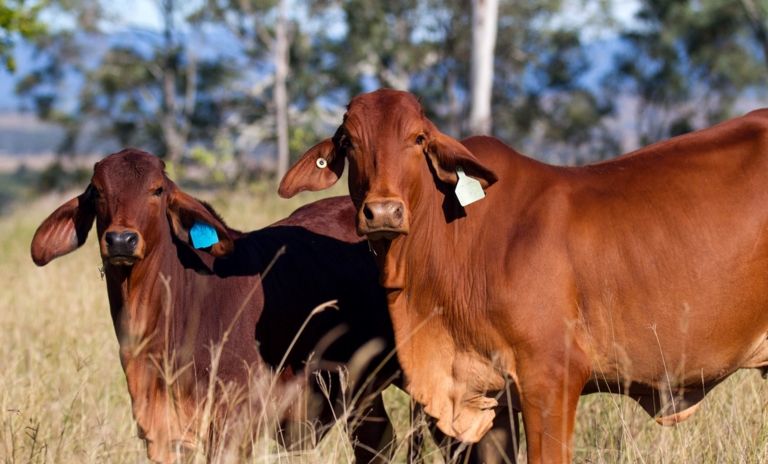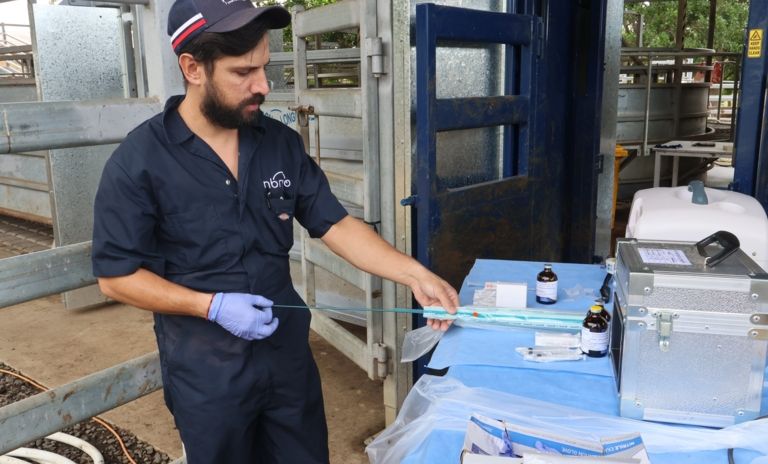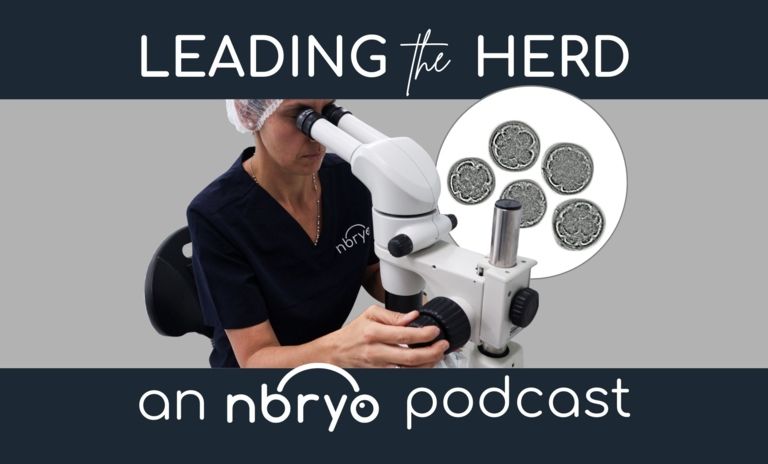
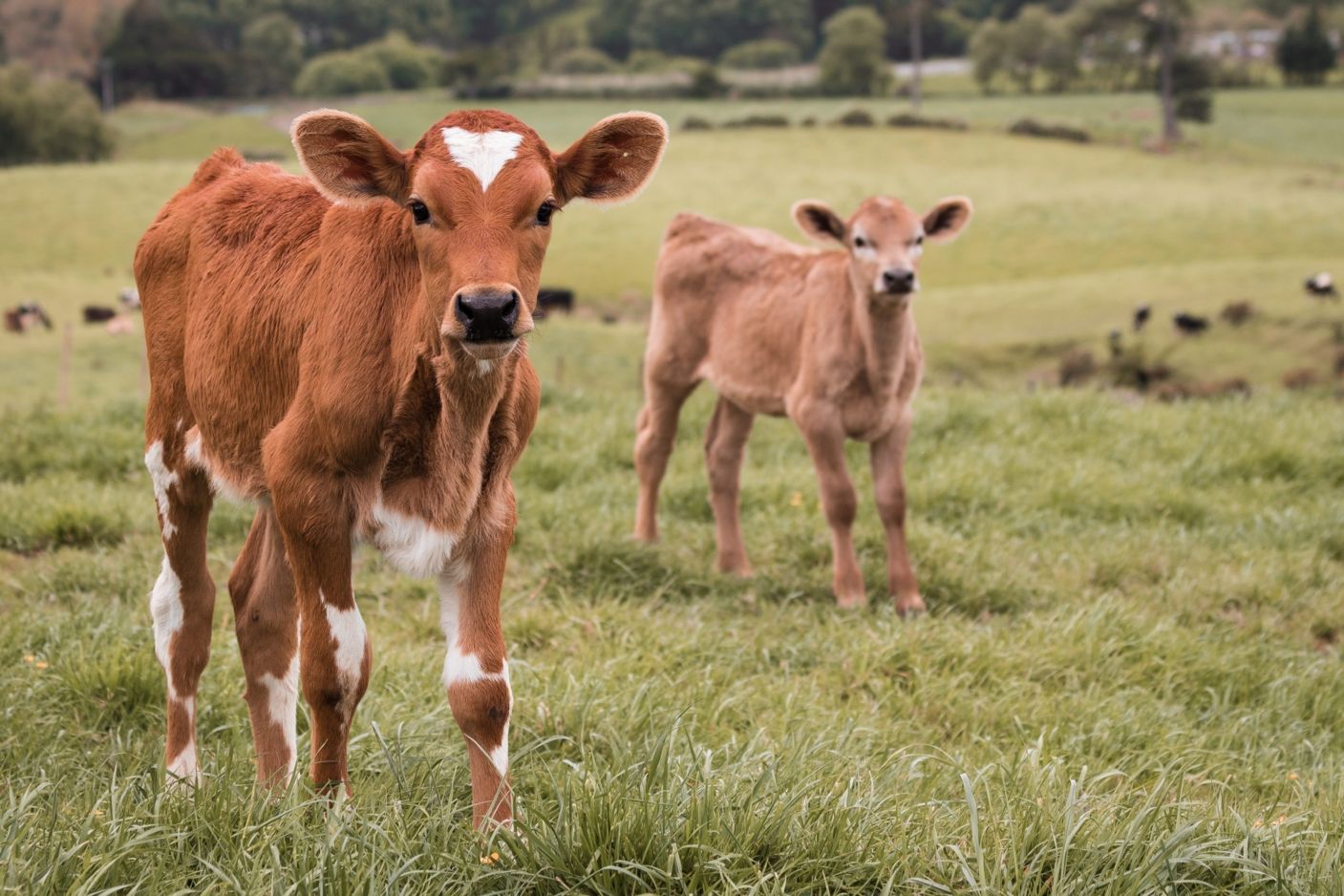
Ovum pick-up often referred to by the acronym OPU is the process by which the oocytes (eggs) are aspirated from the ovary of the donor female. It is also referred to as transvaginal recovery (TVR) in some regions. Oocyte collection is the first and necessary step in the in vitro production of embryos. The OPU process allows for the oocytes to be collected from living elite females, other methods of oocyte collection are from abattoir derived ovaries.
Little preparation is needed for the donor female prior to OPU, however following best practice principles for donor selection and management (see also our donor resource) is recommended. On the day of OPU donor females just need to be available for the technician to perform the procedure at suitable and safe facilities. Also refer to our facilities and equipment resource. It is advisable for the donors to be yarded at least 10 minutes before the arrival of the OPU team. The OPU procedure can be performed as frequently as fortnightly and in pregnant animals up to 90 days to maximise embryo production from individual donors. To optimise the quantity and quality of embryo development, donors can be synchronised and stimulated with follicle stimulating hormone (FSH). This is an optional approach when donors are lower producers or of Bos taurus genotypes, where donor treatment may increase results.
It is very important that all donor identification details and OPU order for the session is recorded during the procedure. Of importance is the selection of semen to be used on each and/or multiple donors. Where a single sire/semen straw is to be used on more than one donor, it is important that these donors are presented after each other in the order so that the in vitro fertilisation (IVF) in the laboratory can be performed at once. Usually, donors are drafted and grouped on this basis prior to starting the OPU session.
The technician and support team will prepare the equipment and media ready for the OPU procedure. The preparation takes around 30 minutes. The farmer could use this time to draft donors according to the semen sire that is going to be used in the laboratory (see also our semen preparation resource). Preparation includes placing a sanitary chemise (cover) over the transducer to maintain best possible hygiene. Once this is complete, donors can then be placed into a veterinary crush, avoiding as much stress as possible.
The technician will examine the reproductive tract to confirm the donor female is suitable and clean the female ready for OPU. An epidural is given to the female to minimise discomfort and allow for ease of performing the procedure. Local anaesthesia presents a small risk of allergic reactions (less than 0.1%).
The technician will insert the ultrasound probe into the vagina of the donor female. Using the ultrasound to visualise the ovary and guide the needle, the antral follicles on the ovary are then aspirated. Using a vacuum pump, the aspirated liquid is passed through a line, into a tube which is maintained at a warm temperature. Once all visible follicles are aspirated from the ovary, the same procedure is performed on the other ovary and then the transducer is removed from the donor female.
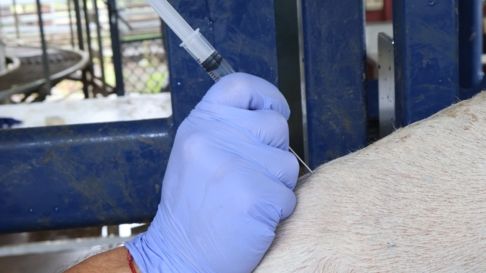
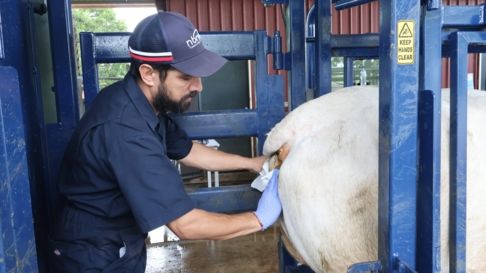
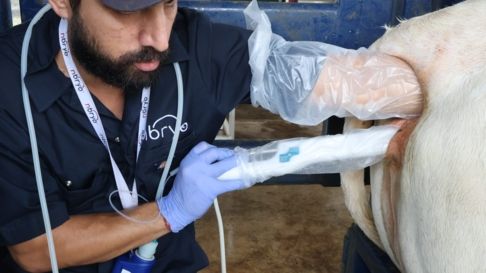
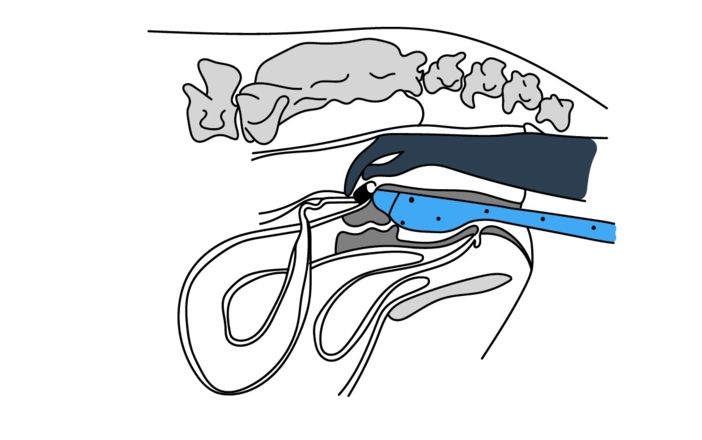
The OPU line is then rinsed to ensure all oocytes are collected and not trapped in the line. The sanitary chemise is then removed, the transducer is cleaned, and a new chemise is applied ready for the next donor female. Although all precautions and care are taken, the OPU procedure presents a small risk of ovarian and uterine adhesions.
Each OPU takes approximately 15 minutes, although the actual time will depend on many factors including the design of the veterinary crush and donor temperament. In good facilities, up to 25 donors can be OPU per day.
It is recommended that donor females have at least 30 minutes rest after OPU before moving them back to their paddock/yard.
After the OPU session has been completed, the warmed tube is then taken to the field laboratory (see also facilities and equipment resource). The tube is searched for oocytes by washing and filtering the contents through a filter specifically designed to capture the oocytes. The remaining solution is then searched under a microscope. All oocytes that are found are placed into a washing media, and are classified into grades 1 to 3, or atretic or denuded, counted and recorded against the donor information.
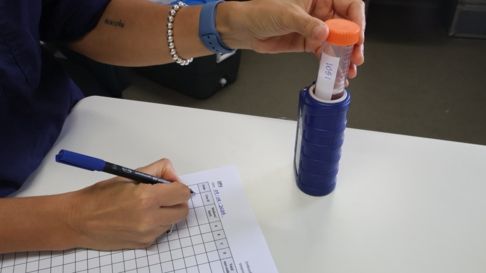
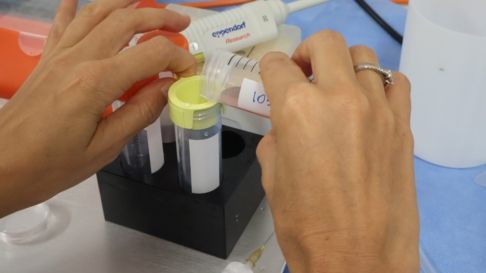
Oocytes that have been graded I, II or III, are then placed into maturation media, and placed into a transport incubator that has been prepared and warmed. The oocytes are then transported back to the Nbryo laboratory to complete the maturation process, before they are later fertilised (IVF) and subsequently cultured for embryo development. (See also embryo production resource)
